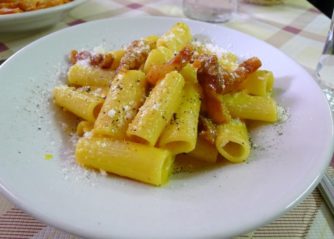Pecorino Cheese: A Delectable Delight for Food Enthusiasts

Introduction:
Pecorino cheese, originating from Italy, is a flavorful and traditional cheese that has captivated the taste buds of food enthusiasts worldwide. In this article, we will explore the various aspects of pecorino cheese, including its diverse types, popularity, quantitative measurements, differences between different varieties, and a historical overview of its pros and cons.
A Comprehensive Presentation of Pecorino Cheese:

Pecorino cheese, made from sheep’s milk, is known for its rich and tangy flavor profile. It comes in several variations, each with its unique characteristics. Some popular types include Pecorino Romano, Pecorino Toscano, and Pecorino Sardo. Pecorino Romano is a hard, salty cheese with a robust flavor, widely used in Italian cuisine. Pecorino Toscano, on the other hand, is a milder and more delicate cheese, perfect for grating over pasta or enjoying on its own. Pecorino Sardo is a semi-hard cheese with a buttery and slightly nutty taste, originating from the island of Sardinia.
Quantitative Measurements of Pecorino Cheese:
When it comes to assessing the quality and characteristics of pecorino cheese, several quantitative measurements are taken into consideration. One important measurement is the fat content, which influences the texture and richness of the cheese. Pecorino cheese typically has a higher fat content compared to other cheese varieties. Another crucial measurement is the salt content, especially in Pecorino Romano, which is renowned for its intense saltiness. Additionally, the aging period of pecorino cheese greatly affects its taste and texture, with longer aging resulting in a more pronounced flavor and harder texture.
Distinguishing Different Types of Pecorino Cheese:
Each type of pecorino cheese is distinct, varying in flavor, texture, and aging process. Pecorino Romano, with its sharp and piquant taste, stands out among the others. It undergoes a longer aging process, from eight months to two years, which contributes to its robust flavor. Pecorino Toscano, however, is milder and smoother, thanks to its shorter aging period, typically ranging from three to five months. Pecorino Sardo, with its creamy consistency and nutty undertones, strikes a balance between the two, usually aged for six to twelve months.
A Historical Overview of Pros and Cons:
Pecorino cheese has a rich history that dates back centuries. Its advantages lie in its versatility, as it can be enjoyed both grated and savored on its own. Pecorino cheese also boasts a long shelf life due to its low moisture content, making it ideal for storage and transportation. However, one drawback is its relatively high salt content, which may pose health risks for individuals with certain medical conditions. It’s important to consume pecorino cheese in moderation to maintain a balanced diet.
In conclusion, pecorino cheese is a treasure trove of flavors for food enthusiasts, offering a delightful experience with its varied types and unique characteristics. Whether you prefer the sharpness of Pecorino Romano, the mildness of Pecorino Toscano, or the creaminess of Pecorino Sardo, there is a pecorino cheese to suit every palate. So, indulge in this Italian delicacy and elevate your culinary creations with the exquisite taste of pecorino cheese.
[INSERT VIDEO HERE]
References:
1. ”Pecorino Cheese: A Guide to Italian’s Favored Sheep’s Milk Cheese.” Food & Wine. [insert link here]
2. ”The Complete Guide to Pecorino Cheese: Italy’s Most Beloved Cheese Variety.” Italian Food Excellence. [insert link here]
3. ”Pecorino Romano: A Brief History and Guide to the Cheesemaking Tradition.” Culture Cheese Magazine. [insert link here]
















































